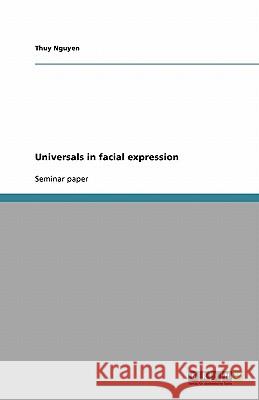Universals in facial expression » książka
Universals in facial expression
ISBN-13: 9783640173013 / Angielski / Miękka / 2008 / 28 str.
Seminar paper from the year 2005 in the subject English Language and Literature Studies - Linguistics, grade: 1,7, University of Duisburg-Essen, course: Non-verbal aspects of communication, 4 entries in the bibliography, language: English, abstract: This essay deals with the question whether facial expressions are universal meaning that all cultures use the same mimics for expressing a certain feeling. Are these expressions innate or do they have to be learned? First, I will give an overview of Charles Darwin's theory about the universality of facial expressions because he was the first who dealt in detail with this issue. The chapter is subdivided in three parts: the first part describes the relationship between the facial expressions of nonhuman primates and human primates. The following part deals with Darwin's observations of the facial expression in infants and children including those children that have no opportunity to learn facial expressions from others. Finally, Darwin's method of cross-cultural study in order to provide evidence for his claim will be presented. The second chapter depicts the behaviourists' position that in contrast to the Universalists' point of view is based on the belief that all facial expressions are learned and culturally bound. The main chapter represents the most current and detailed research of facial expressions. The studies of Paul Ekman and Wallace Friesen refer mainly to Darwin but also consider the cultural aspect. They introduce a neurocultural theory of emotions, showing that the facial behaviour itself is determined by biological factors as well as by social factors. Further, I will give a summary of three important experiments Ekman and Friesen conducted in order to proof that the facial expressions for the six basic emotions are universal. ...]











